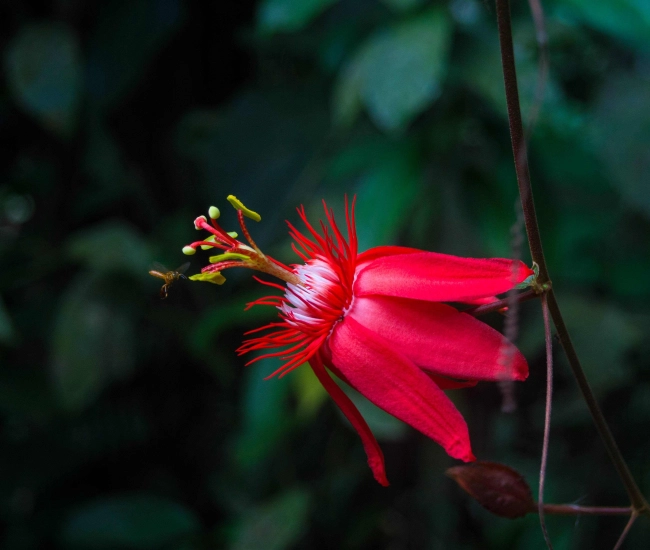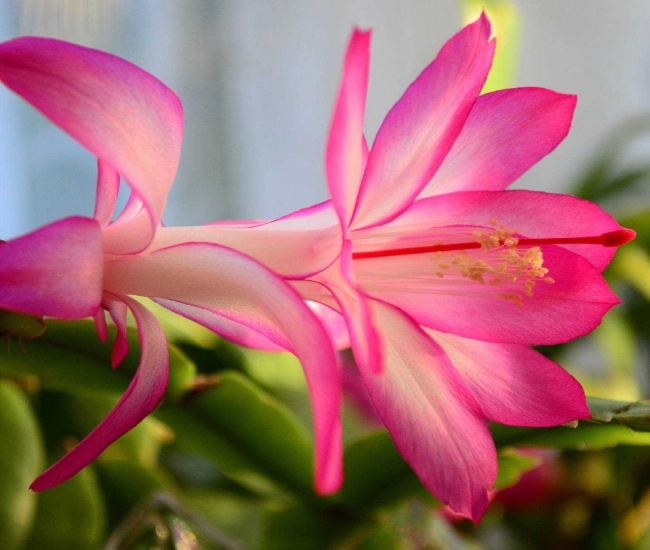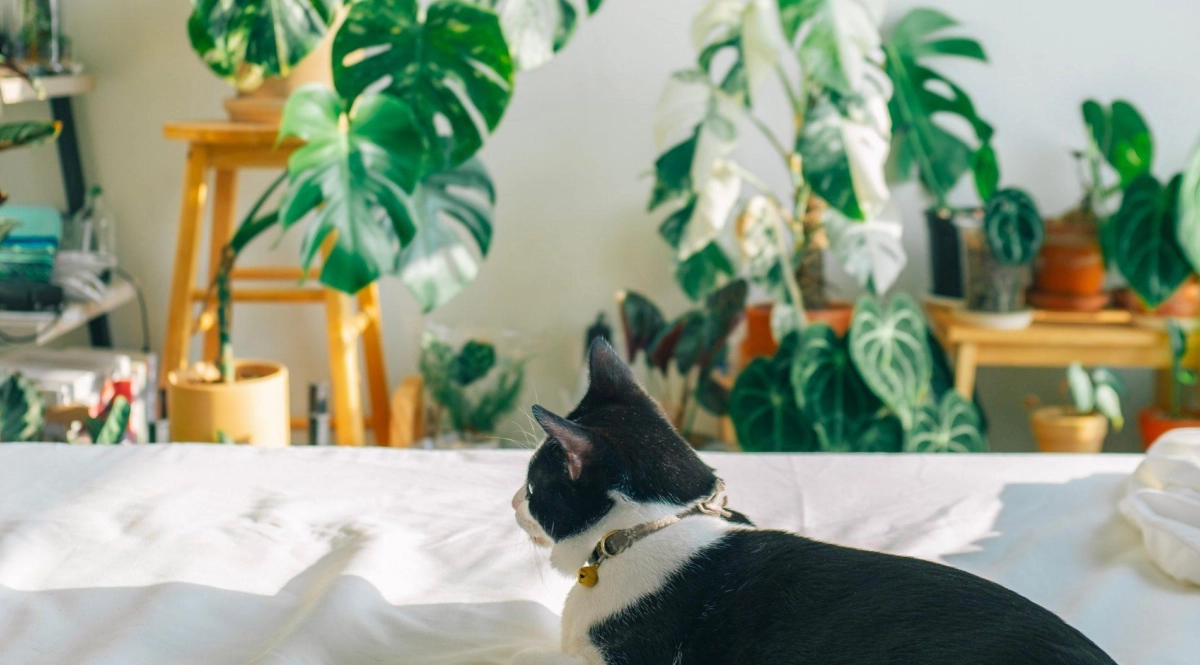
Text by Émilie Gabias, from Gauthier Flowers and Gardens
Does your cat, dog, or even your children take an interest in your houseplants? You can always place them out of reach, often at a height or in a room they cannot access, but sometimes, that’s just impossible. In that case, opt for plants known to be non-toxic for furry friends and curious little humans.
Here are 5 favorite non-toxic plants
Peperomia
Peperomias are often found in the houseplant section of our Passion Jardins merchants. And for good reason! Most are known to be easy to care for, and there is a wide variety: trailing, upright, or rosette-shaped growth habits. Additionally, their foliage is often colorful. The Peperomia obtusifolia is a tough one! Its round, rather thick leaves can be edged in red, variegated with white, cream, or yellow, or even tricolor! For a challenge, try Peperomia prostrata (String of Turtles). Its speckled reddish foliage (resembling a turtle shell) is very delicate and cascades beautifully over the edge of its pot. It is very easy to propagate from cuttings. Most peperomias prefer well-lit areas without direct sunlight, and their soil should dry slightly between waterings. Be cautious with overwatering—some peperomias simply do not tolerate being watered too frequently.
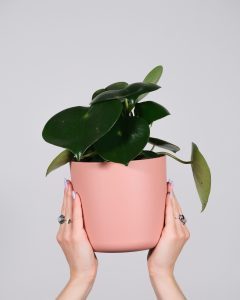
Tillandsia
DIY lovers, tillandsias are for you! These plants, also called "Air Plants," allow for endless creative possibilities. In their natural habitat, they live suspended from trees in tropical regions of Central and South America. Unlike regular plants, they should not be planted in soil, as this would cause them to rot. Instead, they can be placed in a glass vase on decorative gravel, showcased on a beautiful decorative plate, or mounted on a charming driftwood branch—perhaps a souvenir from a seaside stroll. Even though they have no visible roots, air plants still require moisture. Simply remove them from their placement and soak them in water for 30 to 60 minutes once a week to rehydrate their leaves, which absorb humidity. Be sure to shake off excess water afterward to prevent rotting. If your tillandsias are mounted, it’s best to mist them several times a week to keep their leaves healthy.
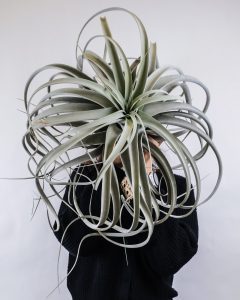
Ferns
Ferns seem like they come from another world with their unique foliage, which varies greatly between species. These plants love humid environments and thrive in indirect sunlight. Where do the most beautiful ferns grow? In churches and old convents, where temperatures remain cool, and sunlight is never too harsh. If recreating such conditions at home proves challenging, opt for ferns with thicker foliage, as they are generally more resilient—such as Asplenium (Bird’s Nest Fern), Davallia (Rabbit’s Foot Fern), or Phlebodium. Ferns are primarily appreciated for their striking leaves, as they do not bloom. Visit your Passion Jardins merchant to discover new fern varieties to adopt.
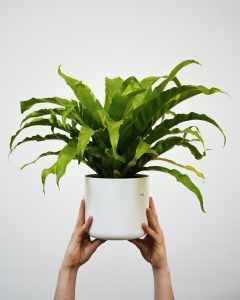
Beaucarnea
Also called Elephant’s Foot, this plant always attracts attention with its swollen base and long, umbrella-like foliage. If you have a cat, be aware that it may try to nibble on the leaves, which resemble long blades of grass. The Beaucarnea prefers sunny locations, and its soil should dry out between waterings. It also enjoys being slightly root-bound in its pot. Thanks to the swollen base, which serves as a water reservoir, it can tolerate long periods without watering if necessary.
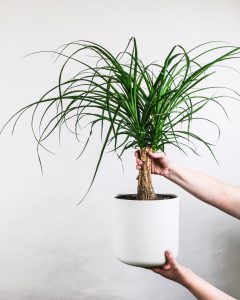
Guzmania
Because flowers always brighten up a space! Plants in the Bromeliad family, including Guzmania, are all non-toxic. The Guzmania displays brightly colored flowers that last a long time—about six months (which is nearly a record for indoor flowering plants!). For a fraction of the price of a tropical getaway, you’ll feel like you’re under the sun! Guzmania requires good lighting, and its soil should dry slightly between waterings. One important note: always keep the central cup, from which the flower emerges, filled with water.

Here is a list of plants that are non-toxic for cats, dogs, and humans.
Keep in mind that just because a plant is non-toxic doesn’t mean it’s edible. Avoid consuming a plant entirely just to "test" its safety. Some people or animals may still be allergic to certain compounds in plants.
Below is a list of commonly found non-toxic plants, including species that are easy to find in garden centers.
- Abutilon spp. (Flowering Maple)
- Achimenes spp. (Hot Water Plant)
- Adiantum spp. (Maidenhair Fern)
- Aechmea fasciata (Silver Vase Plant)
- Calathea spp. (Calathea)
- Chlorophytum comosum (Spider Plant)
- Guzmania spp. (Guzmania Bromeliad)
- Hoya carnosa (Wax Plant)
- Maranta spp. (Prayer Plant)
- Neoregelia spp. (Neoregelia Bromeliad)
- Pilea spp. (Chinese Money Plant)
- Saintpaulia spp. (African Violet)
- Stevia rebaudiana (Stevia)
- Tillandsia spp. (Air Plants)
This list is not exhaustive and includes plants that are easy to find at garden centers. If in doubt, check before introducing a new plant to your home, especially if you have pets. Many online resources and your veterinarian can provide more information.
It's also wise to know the botanical names of your plants (preferably in Latin) for proper identification in case of potential toxicity concerns. Some toxic plants may only cause mild irritation, while others can be fatal if ingested.
Tips and advice

